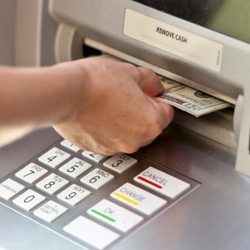The Safe Withdrawal Rate - Can You Trust It?
Everyone works to amass the largest retirement portfolio they can. But how do you know that it will be big enough once you start withdrawing money for living expenses in retirement? There actually is no scientific answer to this question because it is an attempt to predict the future. However there is a convention, known as the safe withdrawal rate, that can help provide some direction.
What Is The Safe Withdrawal Rate?
The safe withdrawal rate attempts to provide a standard estimate of how much money you can withdraw from a retirement portfolio without ever depleting the account. Various studies have shown that you can withdraw from your retirement portfolio at the rate of 4% per year without ever emptying the account.
How did they arrive at 4%?
Is mostly based on stock market returns. The historic rate of return on stocks is somewhere between 6% and 10%, depending on the specific time frame and who’s doing the calculating. To keep it simple let’s just use 8% since it sits at the middle of the range.
If you withdraw 4% of your account each year for living expenses, but the portfolio earns 8% in the stock market, your account will continue to grow even though you’re using some of the money. This growth is also important because of inflation. It has been running at a rate of about 3% per year for the past 30 years. So if you are earning 8% on your money, withdrawing 4% for living expenses, and 3% is being siphoned off by inflation, your portfolio is still growing at an annual rate of 1% in real terms.
Advertisement
You’ll be able to withdraw 4% per year safely knowing that the value of your portfolio will always remain intact.
The safe withdrawal rate is a reasonable convention for planning purposes. But it’s important to remember that it’s just a convention, and it is not perfect.
It Works Over The Long-Term
The beauty of the safe withdrawal rate is that it works well over very long periods of time. Since it is based on long-term stock market return averages, you will be able to withdraw 4% per year and know that your portfolio will always be able to keep up with inflation, if not more.
You can take just about any 20 or 30 year period and the safe withdrawal rate concept will generally perform as promised. This is the very reason why it’s become such a widely accepted convention. In addition, it’s probably the only reasonable estimate available on the effects of withdrawing money on a portfolio. It is a valuable planning tool even if the outcome can be negatively affected by different variables.
But At times It’s Failed Miserably
Though the safe withdrawal rate is a reliable estimate over very long periods of time, it doesn’t always do nearly so well during shorter time frames. There is a real risk that the value of your portfolio can plunge substantially during shorter periods of time. Let’s look at a recent example.
The market (DJIA) opened 2000 at 11,501; ten years later, it opened 2010 at 10,430. Based on market levels alone, you would have lost about 9.3% of your portfolio. For simplicity sake, we’re not factoring dividends into this calculation, but we’re also ignoring inflation.
Now if we deduct the safe withdrawal rate of 4% each year for the decade, you will have further reduced your portfolio by about 40%. Adding the 9.3% decline in the Dow to your cumulative withdrawals, you would have seen your portfolio decline by nearly 50% from 2000 to 2010.
Adding insult to injury, you would have to start out the new decade with a greatly reduced portfolio, making it much more difficult to recover your losses.
In order to minimize the impact of a falling market, it will help to have non-retirement assets available that you can use for living expenses so you don’t magnify your losses by taking withdrawals from your portfolio.
The Safe Withdrawal Rate Isn’t A Guarantee
Once again, understand that the safe withdrawal rate is just an estimate and not a guarantee of anything!

It’s a planning tool, not a failsafe provision.
In point of fact there is no way to know for certain what the impact of regular withdrawals will have on your retirement portfolio. The state of the stock market, as discussed earlier, is one major variable. Inflation is another factor, and a great big one at that. Let’s say for example that inflation rises above the 3% average to, say 6%. Even if you continue earning 8% on your portfolio, if you withdraw 4% per year for living expenses, your portfolio will lose 2% of its value each year in terms of real purchasing power.
Another potential flaw could be the effect of a flat or declining stock market that lasts much longer than a decade. That was virtually the state of the market from 1966 until 1982. It is not inconceivable that a bear market cycle lasting 20 years or more could occur.
Diversification is another wrinkle. What if only half of your money is in stocks earning 8% while the other half is in interest bearing investments earning 2%? Your rate of return drops to 5% overall, which won’t support a 4% withdrawal rate once inflation is factored in.
Even with all of those caveats, the safe withdrawal rate is still useful. The whole point of saving money for retirement is to have it available for living expenses when the time comes. And you have to be able to make a reasonable estimate of that to have any reason to plan at all.
Do you ever consider the safe withdrawal rate in your retirement planning? Do you think it has merit? Or do you think that’s it’s an attempt to project an outcome that can’t be known?
Leave a comment